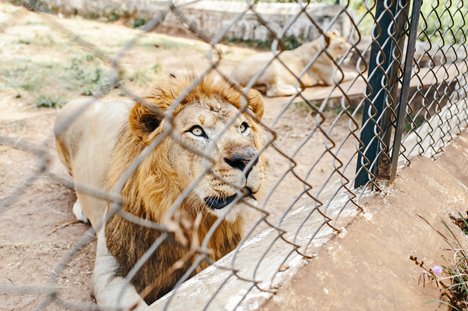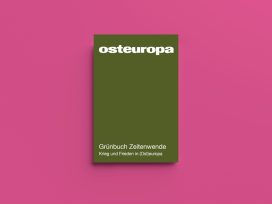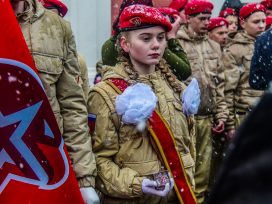I grew up between two very different and yet very similar countries – Finland and Estonia. In both countries, the birth of fiction was connected with a national awakening. It was during the mid-nineteenth century that literature written in Finnish and Estonian became an important foundation for national identity. At that time, both Finnish and Estonian intellectuals had been educated in a language other than their native one; in Finland it was Swedish and in Estonia it was German, because Estonia’s upper class consisted of Baltic Germans at the time. Finnish and Estonian were the languages of common people and farmers; these languages were considered unsuitable for literature. And both countries were under the rule of the Russian Empire.
Our national epics have common features; they were published around the same time and are based on an oral tradition. In Finland, Elias Lönnrot’s Kalevala was published in 1835. It was mainly based on data that Lönnrot had collected from Karelian folksingers. In Estonia, Friedrich Kreutzwald completed the epic poem Kalevipoeg in 1853, based on material collected by Friedrich Robert Faehlmann.
Publications based on folklore laid the foundations for national identity. Though Finns and Estonians had yet to establish their own states, they did have their own culture and history. We had our own language and a literature that reflects our major national events. It became perfectly clear that nations whose history and identity stories are written down are always stronger than those whose history and great stories remain unwritten. It wasn’t long after the publication of works by Lönnrot and Kreutzwald, among others, that both countries declared their independence.
Finnish and Estonian are among those rare Finno-Ugric languages that are now the official languages of nation-states. Without independence, the future of our literature and language could have turned out as badly as that which many other Finno-Ugric peoples experienced. There are 24 languages in this language group, with a total of 23 million speakers. Only Finnish, Estonian and Hungarian languages and literature are thriving in their respective countries. The remaining 21 Finno-Ugrics live mainly in Russia, which does not support minority rights. Many of these languages are extinct or endangered. Just like other indigenous people, Finno-Ugric people and their languages have always been threatened by colonialism. All nations have histories that unite the nation – for us, those histories are always related to the threat of losing our existence.
As for the differences between Finnish and Estonian literature, these are connected to the fact that Estonia experienced three occupations since gaining its independence, whereas Finland managed to preserve its independence more or less without interruption. These differences are clearly seen in how our national memory is reflected in our literature, and the description of national tragedies and of turning points in recent history. However, one common feature in both of our literatures is that they provide a platform for discussion in times when political situations make it impossible to hold such discussions in public. Such a medium is vital for any nation.
Russia in the history of Finnish literature
I am often asked why I have written so much about matters relating to the Russian Empire and the Soviet Union; and there is now an expectation that most of these will be connected specifically to the Soviet occupation of Estonia. But I also feel an affinity with Finnish literary traditions. Finns love their historical novels. Most of these deal with the history of Finland, and Russia features in almost in all of them. Even our national folk tale “The birch and the star”, by Zacharias Topelius, relates to Russia. The tale, published in 1893, tells the story of children abducted from Finland and taken to Russia. These children remember a birch tree that grew in the yard back home and how, in the morning, birds sang in its branches and every evening a star twinkled between the branches. The children decide to find their way back home and, after a year-long voyage guided by two little birds, they succeed.
The tale is based on Topelius’s own family history. During what Finns call the Great Wrath, that is, the Russian occupation of Finland between 1713 and 1721, Zacharias Topelius’s great grandfather Kristoffer Topelius had to go into hiding together with his mother. However, Cossacks found them, stole the boy, and took him to Russia to become a slave.
After many years, the boy managed to run away and finally reach southern Finland, because he always travelled towards the sunset. From there he went to Stockholm where, by coincidence, he met his mother.
The Great Wrath also prompted another essential landmark work of Finnish literature: the first historical novel, which was also about Russian occupation. In the novel “Lady Catharina Boije and her daughters”, Fredrika Runeberg wrote about the consequences of the occupation. The novel, published in 1858, is set during the Great Wrath. In this way, Runeberg, among other writers, created works of living memory.
Fredrika Runeberg’s husband, our national poet Johan Ludvig Runeberg, also excelled in writing literary works that reflect upon our history. Runeberg wrote a collection of poems called The Tales of Ensign Stål, which was published in two volumes in 1848 and in 1860. It describes Finland’s history at that time and during the Finnish War (1808-9), in which Sweden lost its eastern territories to Russia. The first poem of the book, “Our country” (Maamme), is the Finnish national anthem. Runeberg’s work is Finland’s most significant and widely read literary work.
During the Finnish War, Finnish officials and the gentry were willing to accept Finland joining the Russian Empire. Runeberg, however, thought the Finnish people more patriotic than their political leaders. When it became apparent that the book was about to be banned, Runeberg published it himself. After that there was no use crying over spilt milk. The book was published during a time of national awakening, and it sold like butter. During the Winter War (1939-40), we had three bestsellers: the bible, leaflets about precautions to be taken during air raids and the poems of Runeberg.
Karelia also plays an important role in our literature, even though the area now largely belongs to Russia. Before the Winter War, it was part of Finland. Lönnrot gathered a large part of Kalevala‘s lyrics from there. Karelian motifs are a traditional feature in music, the visual arts and in literature, but following the Paris Peace Treaties (1947), when Finland lost Karelia to the Soviet Union, a new type of literature appeared in Finland: literature written by people with Karelian roots. Half-a-million Finnish citizens had been evacuated from Karelia to Finland in 1941. They started to write, and they wrote also during the period of Finlandization. In particular, women writers with a Karelian background built up a strong literary Karelia in Finland. During the years of Finlandization, literary critics remained hostile to this trend, but readers loved it. For example, Laila Hirvisaari’s historical novels, which deal with the fate of evacuated people, have sold over four million copies in Finland, a country that has five million inhabitants. The loss of Karelia is, and always will be, a part of Finnish literature. Karelia became a literary place where the painful history of Finland could be dealt with, even when public debate on the issue was difficult.
The fact that Finnish literature is full of stories that in one way or another relate to Russia is something that is nowadays considered obvious; the right to write about such matters is not questioned. We have had enough time to write about these things and about our history. Our literary canon has become firmly established. Historical novels continue to be popular, a fact that has become self-evident and is in no way tied to any political act; whereas the very mention of Russia in any other context is immediately politicized.
How to talk about Russia in Finland
Three of my novels describe Estonia’s recent history and periods of occupation. Year after year, one of the most common questions is: why do you write about Estonia’s recent history? As if it requires a specific reason. Every now and then, I come across opinions that writing about Estonia’s recent history amounts to writing against Russia. After my first novel was published in 2003, I came across journalists, also in Finland, who wondered if this was an anti-Soviet book. This word, “anti-Soviet”, belongs to the vocabulary of Finlandization and should belong to the dictionary of the past, not the present. In Finland, Finlandization officially ended when the Soviet Union collapsed.
Finlandization refers to the influence that a stronger power exercises on the policies of weaker states. In Finland, it meant censorship affecting our publishing policy, news media and movies. Also, the Ministry of Education prevented the spread of negative information about the Soviet Union, especially in history books. The Soviet Union always had to be described in a flattering way. Schoolchildren were, for example, taught that agricultural collectivization in the Soviet Union took place entirely on a voluntary basis, that the Prague Spring was caused by “a counter-revolutionary threat”, and that socialism in the Soviet Union worked well, that there were no social problems there. According to the school books, “The Red Army liberated the Baltic States from German occupation and these states joined the Soviet Union as its new republics”. None of this was true, but we were taught that it was.
It’s no wonder that my peers heard about Estonia for the first time as teenagers in native language classes, while studying the languages of the same language family. This kind of situation seems strange when it comes to Finland’s nearest neighbour, but the memory loss brought about by the Soviet Union affected even neighbouring countries.
Every nation and state has its own great story, its own traumas that have hurt the whole nation, and these experiences unite people. For Ukrainians, it’s the Holodomor; for Armenians, the Armenian genocide; then there’s the Jewish Holocaust, the Finnish Winter War and the mass deportations from Baltic nations.
In Finland, writers started to write about the Winter War soon after it ended. The authors’ views weren’t always considered appropriate – the Finnish classic, Väinö Linna’s Unknown Soldier, and Paavo Rintala’s books even started book wars. However, they wrote books that Finnish people read and, most importantly, their books were written in Finnish, in Finland – not in exile.
During the Khrushchev thaw, Gulag literature written by Finns was also published, including the personal memoirs of Gulag prisoners, and they became bestsellers. But thereafter, the political situation tightened, as did censorship and self-censorship. Just like in the Soviet Union, censorship was never consistent throughout time. It altered from year to year.
Literature as a refugee
During the Soviet occupation, the situation in Estonia was different. The Soviet regime meant that everything related to the Republic of Estonia was forbidden. While I learned the national anthem by heart in Finland and sang it on Independence Day, in Estonia, the Estonian flag, the national anthem and the national flag’s combination of blue, black and white were prohibited, as were Independence Day activities. While I read in school about Finland’s most important national story, the Winter War, in Estonia, occupation and deportation were forbidden topics that could not be discussed in public.
But Estonian authors did write about these topics – in exile, abroad. Refugee communities maintained Estonian literature, which was hidden or banned in Soviet Estonia. The cultured crowd that escaped from Estonia founded publishing houses, newspapers and schools and wrote books that were published, for example, in Sweden or Canada. These books did not reach Soviet Estonia. In Sweden, an Estonian Writers cooperative published the works of refugee authors, as well as other major Estonian writers. For example, Hilja Rüütli’s works were published under the name of Aili Helm in Sweden, though the author herself lived her whole life in Estonia. She wrote a documentary novel entitled “The devil has no shadow” (Kuradil ei ole varju), about life in Soviet prisons and in the camps. A Finnish woman named Anu Marttila smuggled the manuscript out by concealing small slips of paper in her clothes. The manuscript travelled from Tallinn to Helsinki and further to Sweden.
Between 1944 and 1990, works in the Estonian language published by refugees amounted to 267 novels and 181 poetry collections by 75 refugee authors, and 151 memoirs by 90 authors.
I personally remember the moment I read these books for the first time. The fact that the pages contained Estonian text, which sounded normal, and even told of occupation and deportations, felt strange. Before that, I hadn’t really had a reference point. I wasn’t able to yearn for Soviet Estonian bookstores that had books about deportation. In Soviet Estonia, the historical memory of the people relied on the oral tradition; we relied on it.
From private to public
After Estonia regained its independence, biographies became immensely popular, as did memoirs and non-fiction dealing with recent history. Experiences and memories that had remained private became public. Independence also meant that the written language and public speeches were suddenly free of Soviet censorship and propaganda. It became possible to speak and write about events and call everything by its proper name, without using euphemisms. Decolonization also meant the dissolution of colonization through language. A new language was introduced, an independent country’s language, and expressions that had been prohibited for decades returned to use. The fact that these oral memories took on a written form was just as important as the written form of Kalevipoeg, the national epic. (In fact, though biographies and memoirs gained popularity in Estonia, the historical novel did not.)
Russia recognized the occupation of Estonia in 1993. Since then, the situation tightened and Russia has been waging an information war against Estonia. The Baltic countries still have to fight for their right to write their own history, a defensive battle that has accelerated with the rise of Vladimir Putin. Recently, Moscow has repeatedly denied the occupation of Estonia and said that independence is an anomaly or exception.
During Finlandization, Finns often reminded the Soviet authorities that Lenin himself had given us independence as a gift. It was considered a sort of guarantee – the Soviets wouldn’t go against Lenin’s will. But Estonia doesn’t have such a story with which to defend the country. On the contrary, Putin’s personal public image is helping to cement Moscow’s Estonia complex. We don’t really know the truth behind Putin’s personal history as presented to the public, but it has been said that his father belonged to the NKVD’s sabotage company and that he did not receive a warm welcome from Estonians when carrying out an operation in Estonia. According to Putin-legend, his father asked for food, but the disgusting Estonians handed him over to the Germans. The story has its inconsistencies but this legend casts Estonians as the deceivers of the nation’s father. That alone appears to be a good enough reason for Moscow’s anger towards Estonia. Putin’s inner circle includes other people who spent time in Soviet Estonia. They too have gone public with similar stories. But when people who are otherwise very particular about upholding their personal privacy suddenly share personal experiences, there is reason to doubt their motives. Such stories are part and parcel of Russia’s information war against Estonia.
For Putin, the NKVD is an organ worthy of honour and respect. For Estonia, the NKVD is an organ that carried out deportations.
Limited autonomy
I’ve talked about my books in a number of countries and, in many of them, little if anything is known about these deportations. However, people understand immediately what went on when you tell them. The deportations and the Winter War are specific events that took place in specific years at specific locations.
Finlandization however is a political state, a climate, which is more complicated. Little is known about it outside Finland, or it is known only as a political solution. But despite that, this model has been suggested as a solution for Ukraine. Those who made the recommendation didn’t ask for a Finnish opinion. The researcher Mika Aaltola has compared Finland during Finlandization to a lion in a zoo: on the surface, it looked prosperous, but its living space was very problematic.
After the Soviet Union’s collapse, Finland saw no need to create a new language and terminology where speaking about Russia in public was concerned, unlike Estonia. Therefore, the rhetoric of Finlandization still lingers on, particularly in our political rhetoric. In Finland, people are not as aware as they are in Estonia of the degree to which the Soviet reality was rooted in language and linguistic expression, and how language also created and nurtured Finlandization too.
In Finland, collecting individual experiences from the time of Finladization isn’t considered a national task – unlike in Estonia, where collecting individual stories from the Soviet era is seen as just that. Instead, Finland cultivates wartime memories that become tabloid headlines such as “And the people fought”. The headline implies no need to explain against whom. The title “When we fought against Russia” would be very inappropriate, since it contains the phrase “against Russia”, and any Finlandized subconscious would suspect that this might make Russia nervous.
In this year’s Finnish parliamentary elections, which took place in April, the old Finlandized rhetoric was highlighted once again. The chairmen of the two major parties (the Finnish Social Democratic Party and Keskusta, or the Centre Party, which currently holds the largest share of parliamentary seats) said on television that Russia cannot be named as a threat – despite Russian planes flying under the radars, which are surely a threat to security, and Russia conducting hybrid war operations against Finland.
In Estonia, it would be very difficult to imagine politicians using the Soviet rhetoric – and if someone uses it, everyone knows on whose payroll he is. In Finland, the language of Finlandization is widely used in political speeches and even expressions derived from Soviet propaganda are used without recognizing their toxic origins.
Language is a decision and a choice
Language is an instrument that can be put to various ends, and the way this instrument is used changes over time. It may be that certain terms become politically incorrect. For example, many racist terms are no longer in general use. With the passage of time, nations have held varying degrees of control over what kind of language we use and we should remember that language forms our reality, it creates it. Therefore, the kind of language and linguistic expressions we use helps to form our values, and indicates what is acceptable and what is not.
The Soviet Union was skilled in creating verbal realities; Russia remains so. In the case of the Soviet Union, the printed word was to create an alternative, fictional reality. Authors creating that reality were regularly supplied with updated vocabulary lists. These lists stipulated which phrases were permitted to be used. “Soviet Union” could only be used in combination with positive adjectives, “Republic of Estonia” and “United States” could, of course, only be used in combination with negative ones.
In recent years, Russia has waged a similar war of words against the Baltic countries and against Ukraine, thus creating the imaginary enemies that the current Russian administration needs in order to prop it up. One goal of this war is to weaken the enemy. If we know that the Russian government wants its citizens to hate us, then this has a lasting effect. In the same way, the long-term work of Finlandization ate away at our ability to take a stand against Russia. For decades, Finnish editors, publishers, policy-makers, politicians and journalists had to consider which expressions might annoy the Soviet Union; we are still on that path. The language of that time seemed to hail from a toothless mouth with no tongue. The Soviet Union trained Finland to become a country in which we obediently dodge inappropriate expressions towards Russia; this approach is now wedged in our subconscious. There has been no public process, no comprehensive attempt to move on to another kind of language. We have not studied enough the long-term consequences of this practice. Therefore, Finlandization still generates our reality.
Our public discourse is still disfigured. Our literature isn’t like that, and never has been, which is precisely why this literature is so important. If the external reality and the country’s official position do not match with one’s own experience, one tends to distrust one’s own experience. This makes people weak. In Finland, our literature was a tool against that.
Finlandized Finland was a success story for the Soviet Union. An exemplary case that showed the world that the Soviet Union was able to live peacefully alongside its neighbour. At the same time, Finland remained on the Soviet Union’s leash. Given the success of this project, it is no wonder that today’s Russia desires to Finlandize other countries. According to the nationalist Aleksandr Dugin, the whole of Europe should be Finlandized.







